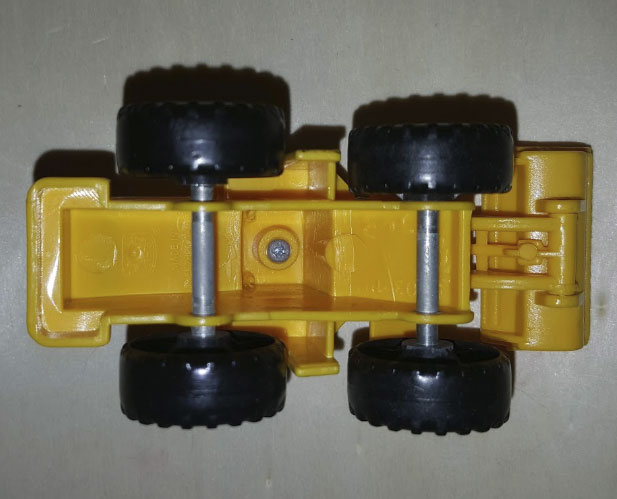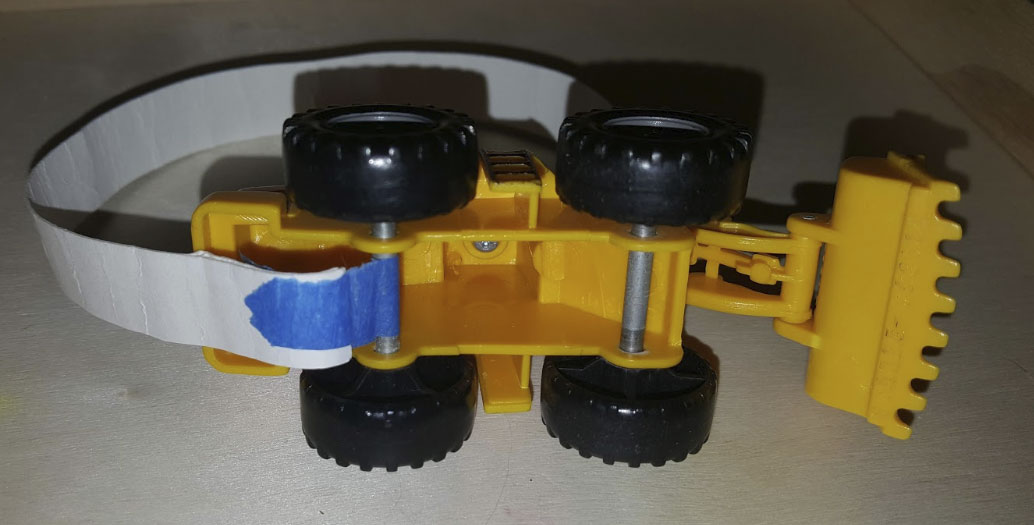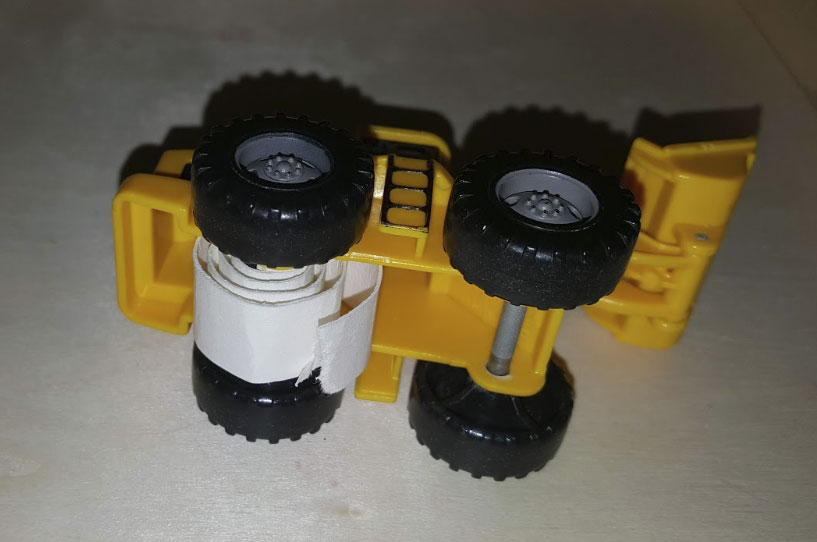Pull Back Cars
- Challenging
- Not Messy
- 30 Minutes
- Indoor
Can any toy vehicle become spring-powered?
Pull back vehicles use springs to store energy. When the vehicle is released, the energy stored in the spring moves the vehicle forward. Can you make any toy vehicle into a pull back vehicle?
Watch the video on YouTube: https://youtu.be/Zzfon8qh9YU
You Will Need
Toy vehicle with an open rear axle, wheels must move with the axle
Material to make coil - suggested materials: strip of plastic, strip of thick paper (like card stock)
Scissors
Ruler
Tape
Paper and pencil (for making observations)
Directions
- Choose a toy vehicle that has the back axle exposed and the wheels move with the axle. A large plastic toy vehicle works well.
- Choose a material to make your coil. A thin plastic strip works well. Or a strip of card stock. The material needs to hold its shape (cannot be flexible like a piece of fabric or tin foil) but needs to be flexible enough to wrap around the axle of the vehicle.
- Use the ruler to measure the width of the exposed part of the axle.
- Attach your coil material to the rear axle with a small piece of tape.
- Wind the coil around the axle, making sure to hold it tight.
- Put the vehicle where you want it to drive, release the coil and watch it go!



Experiment Extensions
Think of the “fuel economy” for your homemade pull-back vehicle. Gasoline-powered vehicles calculate their fuel economy in miles per gallon, or how many miles the vehicle can travel on one gallon of fuel. Your vehicle uses a coil as the energy source instead of gasoline.
- How could you measure the "fuel economy" for different designs?
- For example how many feet can your vehicle travel per initial windup rotation of the axle?
- How does this change with different material coils or different lengths of coil?
- What gives your vehicle the best “fuel economy”?
Do this project with friends or family. Everyone can build their own vehicle and then see whose can go the farthest or the fastest!
Discovery Questions
Beginning the Experiment
- Why do you need to choose a vehicle that has the wheels move with the axle?
- The wheels and the axle need to move together in order for the coil you add to the axle to change how slow or fast the wheels move.
- Does it matter which way you wind the coil?
- Try it!
During the Experiment
- How far do you think your vehicle will go?
- Make an estimation, then measure once you try your vehicle out!
- How fast does your vehicle travel if you wind the coil tightly? How about if you wind the coil loosely?
- Try it! The vehicle should travel further, faster, if it is wound tightly because the coil has more energy wound around it. The tighter the coil is wound, the more energy it will store. When you let the vehicle go, the energy is released in a burst. This usually causes the vehicle to go further and at a faster pace.
After the Experiment
- What happens if you try a different kind of material for your coil spring?
- Try it! For example, if you used a plastic strip, try it again with a strip of cardstock. Coil material that is stiffer should cause the vehicle to go farther and faster.
- What happens when you race different-sized vehicles?
- Try it!
How it works
A spring stores energy when it is compressed or stretched (like a rubber band). The tighter the coil is wound, the more energy it will store. Energy stored in a spring is called elastic potential energy.
When an object moves it has kinetic energy. Energy can transfer from one type to another. When a vehicle is pulled back, it has elastic energy. When the vehicle is released, the coil spring unwinds to convert the energy to kinetic energy, or motion.
The stiffer the spring material, the more energy it stores for the same amount of compressing and winding. The open axle of the vehicle winds up the plastic strip which tightens like a coiled spring when the vehicle is pulled back. When the vehicle is released it quickly unwinds, which spins the tires and sends the vehicle streaking across the floor!
Key Words
- Kinetic Energy
- The energy of motion which makes an object move.
- Elastic Potential Energy
- Elastic potential energy is stored when materials stretch or compress; when the material releases it turns into kinetic energy to make the vehicles move.
- Potential Energy
- Stored energy an object has because of its position or state.
